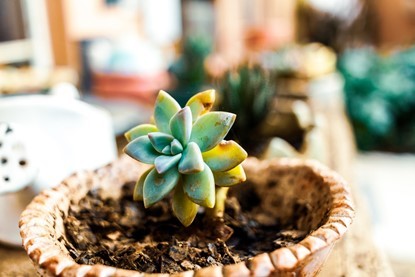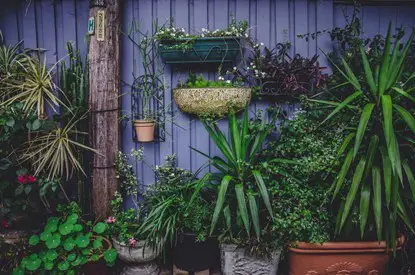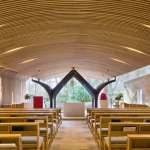Tips on Grow and Gardening for Gorgeously Green Pot Plants Advice, Gardens Help
Tips on Grow and Gardening for Gorgeously Green Pot Plants
16 Nov 2020
Tips on Grow and Gardening for Pot Plants
Having an indoor planting exhibition has become all the rage. Many people are becoming self-proclaimed plant-a-holics and we are also jumping straight onto that train. Investing in a great amount of house plants that are potted is not only great for the interior’s appeal, but it also creates fresh and clean air in the home.
If you are a complete newbie to planting greeneries in different sized pots you will soon realize that keeping a pot plant alive is quite the skill. Whether you want to start investing in different potted greens for indoors or on your patio, then keep on reading for some excellent Live grow garden’s growing tips for a gorgeously green plant exhibition.
Choosing Plants
First, you have to consider the areas you have available and what plants will flourish in those areas. What weather conditions does your home have? Do you have an area in the backyard that is exposed to constant sun or shade? Do you have areas in the home that gets great amounts of sunrays in the late afternoon and not much throughout the day? Knowing exactly what areas get enough sunlight or shade will give you an indication of which plants you can choose.
Here is a list of our most favorite flowers and plants for pots:
Coral Bells – This colorful maroon, peach, and dark green planter has small flowers that look a bit frothy. They need only partly sun and are thus perfect for areas that have half day sunlight.
Euphorbia – This classy looking pot plant features frilly small white flowers similar to that of the baby’s breath. It’s a very tough plant in that it can withstand intense heat and drought. They need partly sun or direct sunlight.
Begonias – These lovely flowers have colors that range from bright orange to pink and white. They are excellent to plant in a hanging basket or in a container with other flowers. Begonias don’t need a lot of water and only partly sun.
Ivy- Ivy is known for its shiny, dark green leaves that grow at a great speed. Its leaves curl at the edges and they can quickly grab onto an unappealing wall and smother it in vibrant greens. This plant is perfect to plant in a pot close to a wall or a screen.
Sweet Potato Vine – This gorgeous plant features heart shaped leaves that cascades from its pot. It is vibrantly green and looks great in a larger than life terracotta pot.
Elephant Ear – With its huge leaves, the elephant ear is a beautiful houseplant that has grown in popularity. They want rich soil and warmth.
For more plant suggestions go to this URL: https://www.gardenersworld.com/plants/top-10-plants-for-containers/.
Drainage and Choosing Pots
One of the most important things to remember when you want to start your potting journey, is that all pots should have decent drainage. It’s important for water to seep through the soil and not accumulate in a muddy puddle at the bottom.
When you want to become an expert gardener, you should know the difference between a planter and a pot. Even though they are used interchangeable, a planter refers to a big container that is typically used outdoors whilst a pot is referred to a smaller round container for indoors.
No matter what kind you want to buy and where you want to place it (either indoors or outdoors), as long as it has enough sun, drainage, and space for your plant you are good to go.
Here are a few things you should consider when choosing pots:
Size- Diameter of the container should be at least 1-2 inches larger than the plant’s current sized pot. If the shrub is currently in a 10-inch container, you should get it a 11-12-inch container in which you will have to repot it.
Porous – Porous containers like terracotta provide the best environment for different plants. This is because it is porous and will dry more evenly compared to plastic ones. Wooden planters will dry too fast.
Design – There are loads of different container types, colors, and sizes available. Remember that it can serve as a great decorative piece that adds finesse to your home. Make sure that you choose one that doesn’t look cheap (like plastic containers) and that you want to look at every day.
Diseases and Pests
It’s not only important to give your new house friends enough sunlight and water, but you should also inspect them for any unwanted diseases and illnesses. Once pests have infested the container, they can kill the flowers, roots, leaves, and stem – creating an unappealing sight.
Here are a few things you can do to avoid them taking over your houseplants:
- Buy only healthy plants from the nursery
- Once you notice one houseplant is infected keep it in isolation to avoid cross contamination
- Cut off dead flowers and leaves
- Remove weeds from the soil
- Inspect leaves, flowers, petals, and stems regularly to check whether you spot any diseases
- Use only clean potting compost and fertilizer
- Treat any diseases and pests immediately using recommendations
- Add nutrients to the soil to ensure it stays happy and healthy
- Follow feeding instructions according to seasons
Common disease usually occurs because of over watering, air is too dry, compost is too wet, burn spots from direct sunlight, not enough sunlight, and regular nibbling and biting from pets.
Read articles on www.gardeningknowhow.com for more information on different pests and diseases that houseplants can get.
Dress up your front porch, your patio, a little reading nook, or home office with different types of pot plants. Vibrant plants and flowers in pots will also add a splash of color to a dark corner or some life to an area of your garden with poor soil.
As long as you put them in the right space, give them enough water, and allow them to flourish where they are planted – you’ll soon have a gorgeously green and lush potted garden.
Comments on this Tips on Grow and Gardening guide article are welcome.
Edinburgh Architecture
Edinburgh Airport, north west of the city

image from Reid Architecture
Edinburgh Airport
image of the development
St James Quarter
Comments / photos for the Tips on Grow and Gardening page welcome



